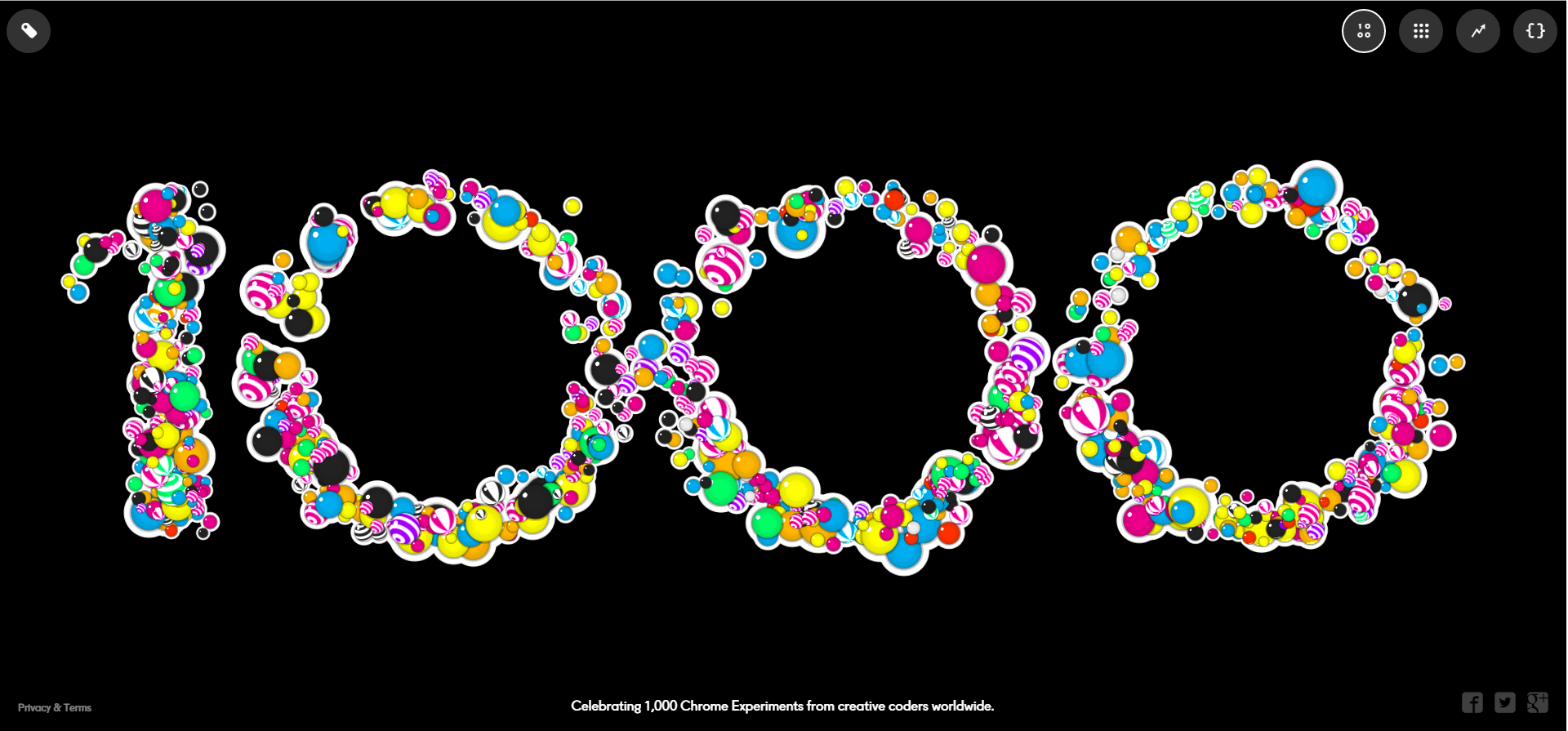Google today announced it has passed a new milestone for its push in moving the web forward: 1,000 Chrome experiments. To celebrate, the company updated its chromeexperiments.com website with a new look and launched its own experiment for the big four-digit debut.
The new website is built using Polymer, Google’s library for the web that leverages Web Components and is “designed to leverage the evolving web platform on modern browsers.” As a result, the new site works on all devices, including phones and tablets in both orientations.
The one-thousandth experiment is fittingly one that puts all the existing Chrome experiments together in a visual display:
The experiment lets you see all the experiments in a grid as well as timeline view. There’s also an option to split them up by tags: 3D, Academic, Demoscene, Drawing, Fractal, Games, Generative, Geographic, Gravity, Interactive Music Video, Microphone Input, Mobile, Mobile Controller, Accelerometer, Multi-Window, Multiplayer, Not WebGL, Particles, Realtime Coding, Social Data, Audio, Speech Recognition, Tools, Trippin, Video, Virtual Reality, Webcam Input, and WebGL.
If you select the mobile tag, you’ll see that out of the 1,000 experiments, about 10 percent work specifically for your mobile device (118 to be exact). That said, Google says “several hundred experiments work on mobile.” Amusingly, the most frequently used tag is Not WebGL, followed closely by WebGL.
In March 2009, or nearly five years ago, Google launched Chrome Experiments to show off what its browser can do. More specifically, the company asked programmers to push the limits of HTML5 and JavaScript in a way that could demonstrate what’s possible.
When the site launched, it had just 19 experiments. Now it has more than 50 times that number, thanks to developers and designers submitting their work.
We’ve asked Google for a breakdown of how many experiments were added each year, and how many only work in Chrome. We’ll update you if we hear back with more details.
Update on February 25: “Now we see about 200 Chrome Experiments are added per year,” a Google spokesperson told VentureBeat (we’re shocked, given that 1000 / 5 = 200). “The submissions really took off when WebGL was added to Chrome.”
As for how many work in other browsers, the Google spokesperson merely said “Chrome experiments use the latest web technologies to create immersive and interactive experiences. Most experiments work best with Chrome.”



